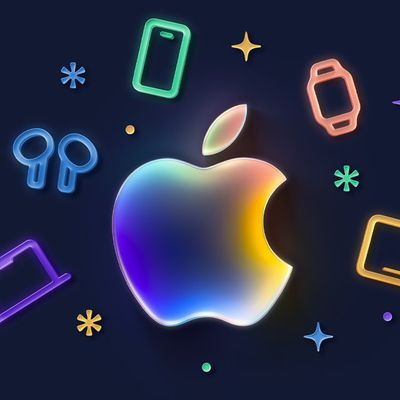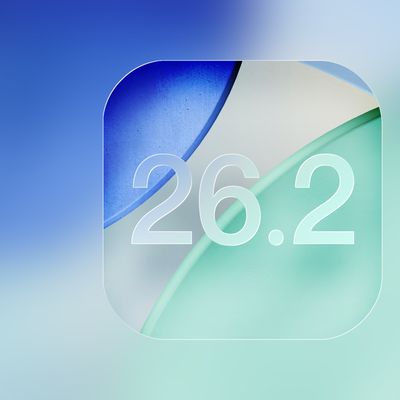Adobe to Stop Distributing and Updating Flash in 2020
 Adobe today announced plans to end-of-life its Flash browser plug-in, ceasing development and distribution of the software at the end of 2020. Adobe encourages content creators to migrate flash content to HTML5, WebGL, and WebAssembly formats.
Adobe today announced plans to end-of-life its Flash browser plug-in, ceasing development and distribution of the software at the end of 2020. Adobe encourages content creators to migrate flash content to HTML5, WebGL, and WebAssembly formats.
But as open standards like HTML5, WebGL and WebAssembly have matured over the past several years, most now provide many of the capabilities and functionalities that plugins pioneered and have become a viable alternative for content on the web. Over time, we've seen helper apps evolve to become plugins, and more recently, have seen many of these plugin capabilities get incorporated into open web standards. Today, most browser vendors are integrating capabilities once provided by plugins directly into browsers and deprecating plugins.
The elimination of Flash and Flash Player should not heavily impact most users because popular browsers have already moved away from the format. Starting with macOS Sierra and Safari 10, Apple disabled Adobe Flash by default to focus on HTML 5, and Flash has never been available on Apple's iOS devices. Google's Chrome browser has also been de-emphasizing Flash since the middle of last year.
Adobe's Flash Player has always suffered from a never-ending stream of critical vulnerabilities that expose Mac and PC users to malware and other security risks. Vendors like Microsoft and Apple have had to work continually over the years to keep up with security fixes.
Apple also shared Adobe's Flash news on its WebKit blog, and the company says it is working with Adobe and industry partners on the transition from Flash to open standards.
Ahead of its sunsetting in 2020, Adobe will continue to support Flash on major operating systems and browsers, issuing regular security updates, maintaining OS and browser compatibility, and introducing new features and capabilities "as needed."
Adobe says it will, however, "move more aggressively" to end Flash distribution in countries where unlicensed and outdated versions of Flash Player are distributed.
Popular Stories
Apple's annual four-day Black Friday through Cyber Monday shopping event is returning on Friday, November 28 through Monday, December 1 in many countries, including the United States, Canada, Australia, New Zealand, France, Germany, Italy, Spain, the United Kingdom, Belgium, the Netherlands, Sweden, Thailand, and others.
During the shopping event, customers can get an Apple gift card with...
Apple's iPhone development roadmap runs several years into the future and the company is continually working with suppliers on several successive iPhone models at the same time, which is why we often get rumored features months ahead of launch. The iPhone 18 series is no different, and we already have a good idea of what to expect for the iPhone 18 Pro and iPhone 18 Pro Max.
One thing worth...
Apple provided developers with the third beta of an upcoming iOS 26.2 update, and there are still new features that are being added with each beta that we get. We've rounded up all of the changes that Apple made in beta 3.
AirDrop
Apple added new AirDrop functionality, providing a way for two people to share files temporarily without having to add one another as contacts.
iOS 26.2...
Apple today announced an expansion of AppleCare+ coverage in India, with new options for monthly and annual plans, and the addition of Theft and Loss for iPhone for the first time.
Options for monthly and annual AppleCare+ plans in India provide more choice and flexibility, allowing users to keep coverage for as long as they require. Apple's vice president of Worldwide iPhone Product...
Apple's eighth-generation iPad mini is highly likely to arrive next year, offering a significant refresh of the device with at least four major new features.
OLED Display
The next-generation version of the iPad mini could feature an OLED display, as part of Apple's plan to expand the display technology across many more of its devices. Apple's first OLED device was the Apple Watch in 2015, ...
A new study has revealed that the iPhone 17, iPhone 17 Pro, iPhone 17 Pro Max, and iPhone Air achieve significantly faster average Wi-Fi speeds compared to the iPhone 16 series, thanks to Apple's custom-designed N1 chip.
The study was conducted by Ookla, the company behind the popular Speedtest website and app. It said the results are based on global, crowdsourced Speedtest user data...
In select U.S. states, residents can add their driver's license or state ID to the Wallet app on the iPhone and Apple Watch, providing a convenient and contactless way to display proof of identity or age at select airports and businesses, and in select apps.
Starting this Wednesday, November 19, the feature will be available to residents of Illinois.
The announcement confirmed that the...
We're getting closer to Black Friday, which lands next week on Friday, November 28. In the lead-up to the shopping holiday, we're tracking a few lowest-ever prices on Apple's most popular Macs, including the M4 MacBook Air and brand new M5 MacBook Pro.
Note: MacRumors is an affiliate partner with some of these vendors. When you click a link and make a purchase, we may receive a small payment,...
iOS 26.2 is currently in beta testing. The upcoming update includes a handful of new features and changes on the iPhone, including a new Liquid Glass slider for the Lock Screen's clock, offline lyrics for Apple Music, and more.
In a recent press release, Apple confirmed that iOS 26.2 will be released to all users in December, but it did not provide a specific release date.
Keep reading...
Apple today released updated firmware for several accessories, including the 140W USB-C Power Adapter, the Magic Trackpad 2, the Magic Trackpad USB-C, the Magic Keyboard with Touch ID, and the Magic Keyboard with Touch ID and Numeric Keypad.
There is no word on what's included in the updated firmware at this time, but it could offer performance improvements and security updates. Accessory...
 Adobe today announced plans to end-of-life its Flash browser plug-in, ceasing development and distribution of the software at the end of 2020. Adobe encourages content creators to migrate flash content to HTML5, WebGL, and WebAssembly formats.
Adobe today announced plans to end-of-life its Flash browser plug-in, ceasing development and distribution of the software at the end of 2020. Adobe encourages content creators to migrate flash content to HTML5, WebGL, and WebAssembly formats.
























